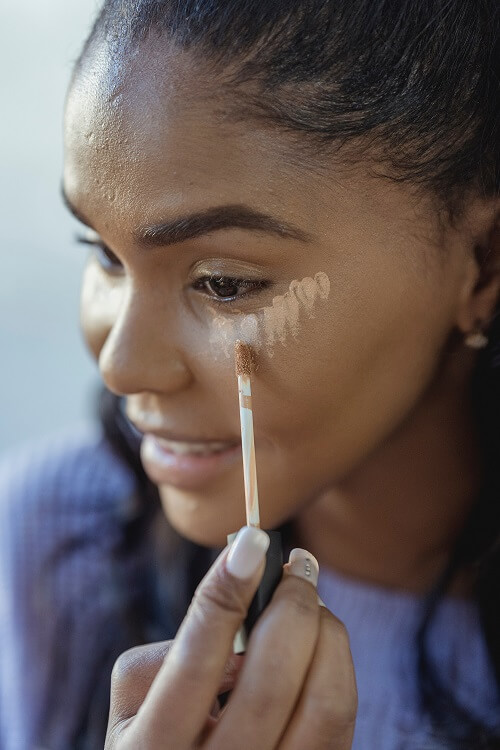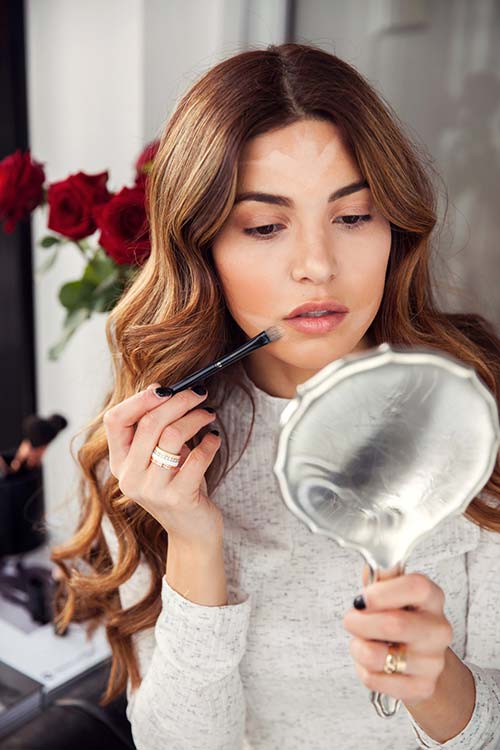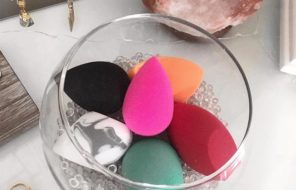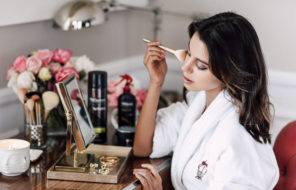Ask anyone what they want from their makeup, and chances are their answer will reflect what we all want: an airbrushed finish that looks ethereal and lit from within. And while that may sound like something only Bobbi Brown herself can do, it’s really not that hard if you follow a few specific steps.
Technique matters, but the real key is to start with clean, hydrated, and primed skin, then finish with the right setting spray. Below, we’ll walk you through everything you need to know about the art of flawless foundation application and how to do it in six simple steps.
Step 1. Cleanse and prep your skin
The first key to flawless foundation is to ensure you start with a clean canvas. That means using a gentle and effective cleanser to wash away all traces of dirt and makeup without stripping your skin of its essential natural oils.
Step 2. Hydrate
Once your face is free of dirt and other impurities, follow up with a good moisturizer. Those with dry skin probably wouldn’t dare to skip this step, but if your skin leans oily, you still need a good moisturizer. Oily skin will overcompensate for the lack of hydration by producing more oil, and when it does, you can kiss your dream of flawless foundation goodbye.
If your skin is typically dry, reach for a heavier moisturizer that contains hydrating ingredients like hyaluronic acid. If it’s oily, skip the heavy emollients and opt for a lightweight moisturizer instead. Hydration is crucial for balanced, healthy-looking skin, and poorly moisturized skin can open the door to flakiness and a patchy, streaky foundation look.
Step 3. Apply a primer
Primers rank right up on the list of must-haves for flawless foundation, so don’t skip this step either. Using primer typically makes a great base for applying foundation and does the heavy lifting to prevent slippage. All you need is a dime-sized amount after you’ve given your moisturizer a few minutes to penetrate. You can always add more to problem areas like your nose and forehead.
Again, it’s important to choose the right makeup primer formula for your skin type. Mattifying primers are best for oily or combination skin, while dry skin types should opt for hydrating primers that encourage a dewy finish.
Step 4: Apply concealer

If you use concealer, this may be the time to add some extra coverage for hyperpigmented spots or dark under-eye circles. Applying concealer before your foundation is especially important when using powder foundation. Applying liquid or cream concealer over a powder foundation can lead to caking and streaks — none of which are a good look.
Step 5: Apply your foundation
Once your primer is in place, it’s time to apply your foundation. Just know that application techniques vary depending on the formula and your skin type.
Liquid or cream foundation
Start by dotting some foundation around your face. This ensures complete coverage while keeping your usage in check, so that you won’t wash half your foundation down the sink. Then, using a foundation brush or moistened sponge, start blending. Be sure to work from the center of your face outward, and keep an eye out for streaks if you’re using a brush.
Powder foundation
To apply powder foundation, start by lightly swirling a large powder brush into the foundation. If your swirling was a bit overzealous, remove excess foundation by lightly tapping the brush with your finger. Apply your powder foundation by swiping the color onto your face in broad, circular strokes. Repeat as needed until you reach just the right coverage level.
Stick foundation
Much like liquid foundation, you can dab or swipe stick foundations around your face. Once the color is in place, you can build and blend to your heart’s content. Again, like liquids and creams, you’ll probably want to use a foundation brush or makeup sponge for seamless application.
Step 6: Set your face makeup
While primers can help keep your makeup in place, so can setting sprays and setting powders. These products can help your makeup stay put and give you the finish you want.
Some leave your skin with a matte finish (better for oily skin types), while others give you a dewy, radiant finish (better for dry skin types). Moreover, you can bring setting sprays can along with you for a refreshing midday pick-me-up and to extend the wear time on your foundation.
Graduating with a degree in flawless foundation application
Flawless foundation isn’t some fancy parlor trick that only the pros and their clients can accomplish. You can do it, too. Just remember to start with a clean, hydrated face, select the right formulas for your skin type, and use the best tools for each step of the process, which ensures you’ll end up with the perfect foundation finish.





